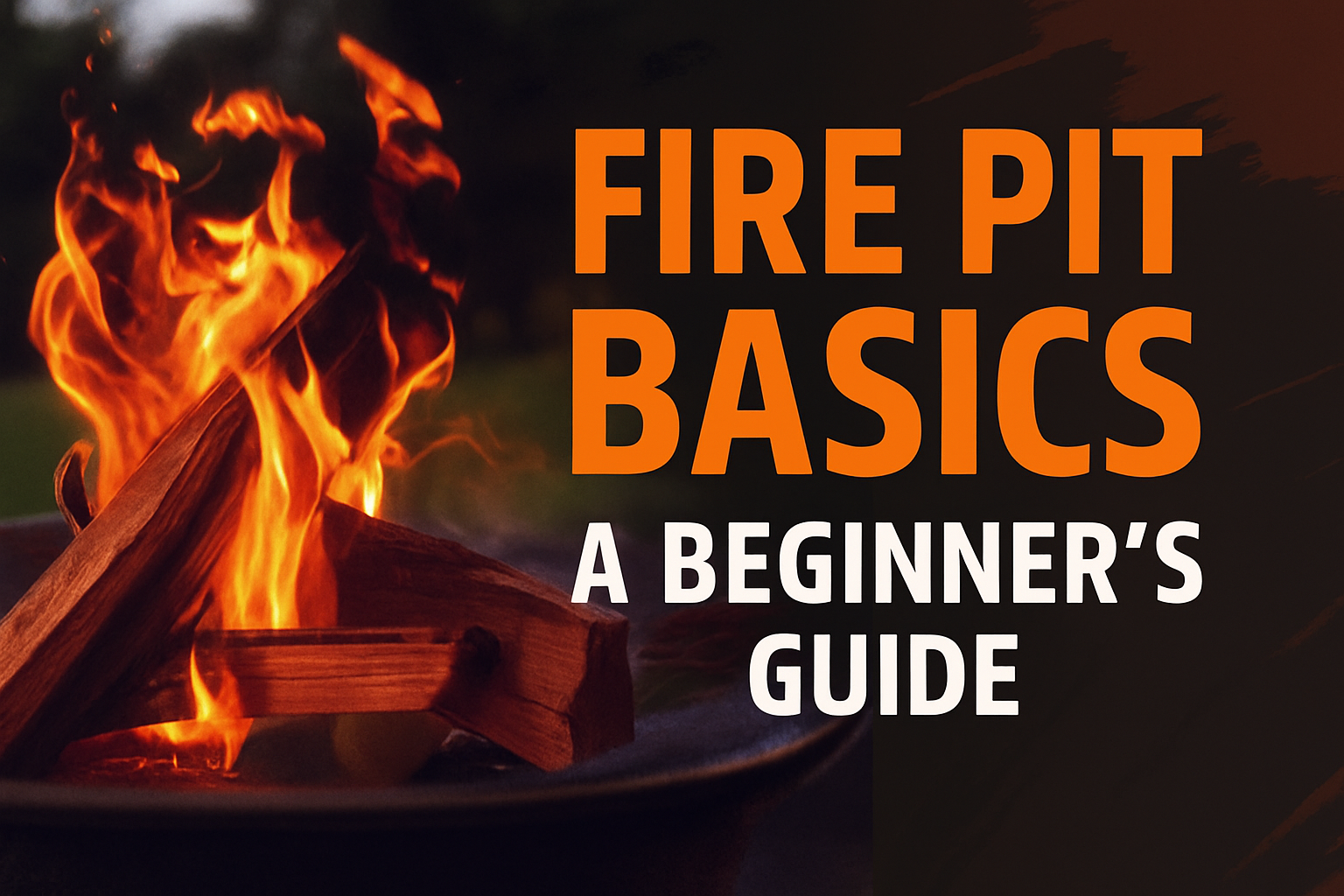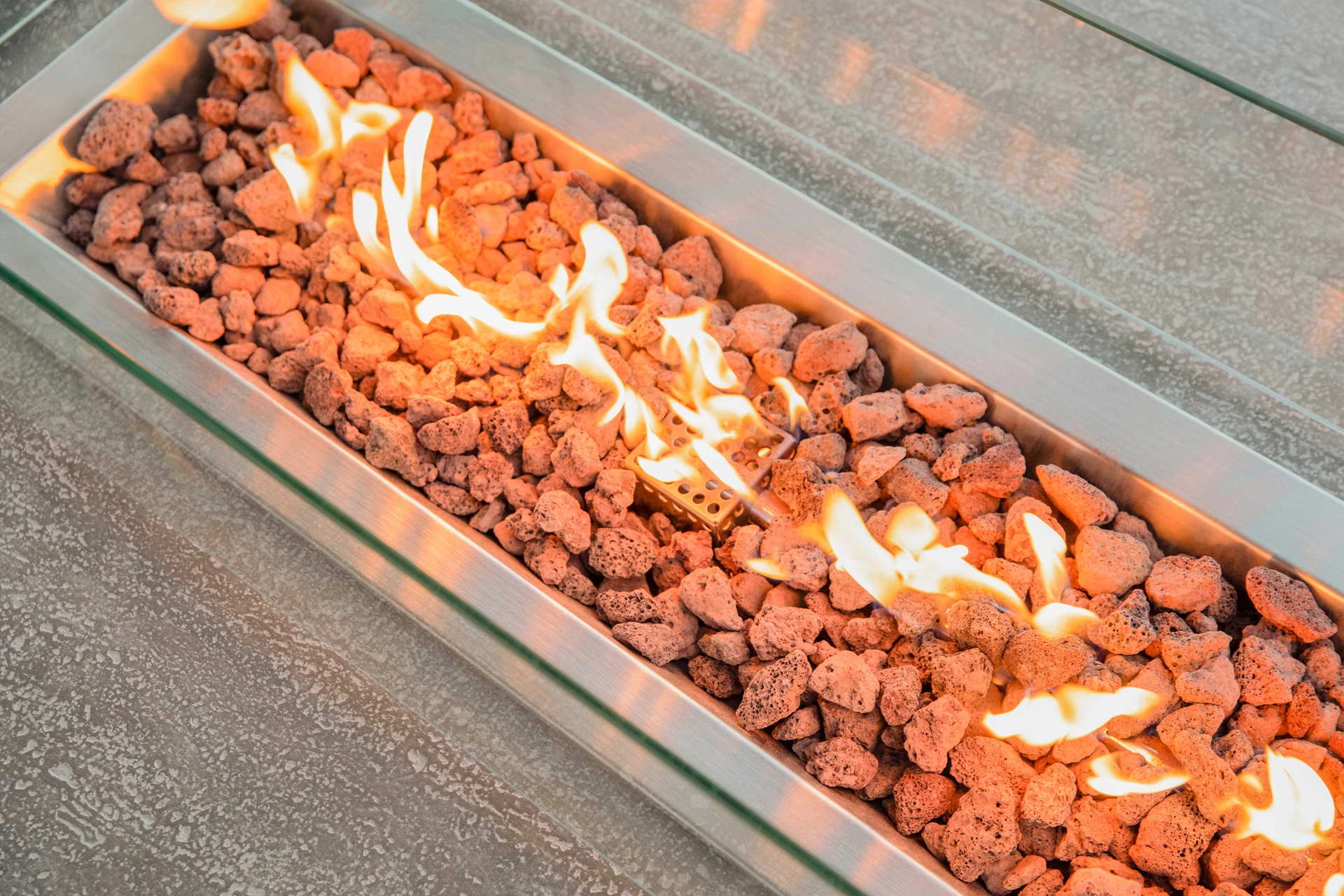Using an outdoor fireplace for the first time? These instructions will guide you safely through the basics. Whether gas (propane/natural gas) or wood – with the right steps and a little care, you can enjoy summer evenings and winter nights in a relaxed and safe way.

1 Before the start: safety & course check
- Open outdoor area: Only operate outdoors and well ventilated; observe minimum distances to the sides/top as specified by the manufacturer.
- Substrate & heat protection: Always use a heat-resistant carpet pad (heat protection mat/stone slab) on wooden/WPC decks.
- Extinguishing agent ready: Fire extinguisher or fire blanket ready to hand; keep children and pets away.
- Fuel/connections: Gas: Check hoses, pressure reducers and connections for leaks. Wood: Have tinder, kindling and dry firewood ready.
2 Two main types of fireplaces
- Gas fireplace (propane/natural gas): Clean, fast, easy to regulate – ideal for the deck.
- Wood fire pit: Classic campfire feeling, but pay more attention to preparation/post-processing and sparks/quenching.
3 Lighting the gas fire: Step by step
- Open the gas: Only open the valve slightly at first, do not open it fully immediately.
- Ignition: Follow the instructions for piezo/button ignition. Without button ignition, use a long lighter; keep hands away from the burner (slight “poof” sound possible).
- Stabilize the flame: Leave to burn for 1-2 minutes on a low flame, then increase as required.
- Never leave unattended: Always keep an eye on the burning fireplace.
- Switch off: After use, close the gas valve and wait for it to go out completely.
- 💡 You can find more information on how they work in our detailed article: Gas fireplace – how it works, advantages & selection
4 Lighting the wood fire: Material & structure
Required: Tinder (e.g. dry leaves/pine cones/chips), kindling (small to medium dry branches), dry firewood, long lighter/matches.
4.1 Structure (classic “chimney” variant)
- Lay the base: Lay two logs parallel as the first layer (bark down).
- Stack crosswise: Stack the second layer crosswise on top, creating a “#” grid.
- Third layer: Again two logs crosswise, approx. three layers in total.
- Fill the center: First place kindling in the central opening, then tinder and some more kindling (tinder has contact with the wood).
- Lighting: Light tinder; fire spreads to kindling and logs (1-2 minutes patience).
- Rules & topping up: Add small amounts of wood when the flame is stable; do not “choke” the air supply.
5 Extinguish a wood fire safely
- Allow to burn out: Do not add any more wood, pull the logs slightly apart.
- Extinguish quickly: Cover embers completely with sand/water/ash. Stir with a non-flammable stick until there are no more embers.
- Emergency: Use fire extinguisher/blanket; do not cover/leave until completely cooled down.
6 Common mistakes – and how to avoid them
- Operation in closed/semi-closed areas.
- No heat protection mat on wooden/WPC decks or lack of safety clearance to the top/side.
- Gas connections without a leak check or aged hoses.
- Wood placed too close/too large → smoke/glut accumulation.
- Unattended fire; children/pets too close to the flame area.
Find out more in our gas vs. wood fireplace guide – there you will find a detailed comparison of heat output, operating costs and maintenance requirements.
7 Conclusion
You now know the differences between gas and wood fires, the correct ignition steps, the wood structure and how to extinguish the fire safely. Always follow the manufacturer’s instructions and local regulations – then nothing will stand in the way of cozy, safe evenings by the fire.










